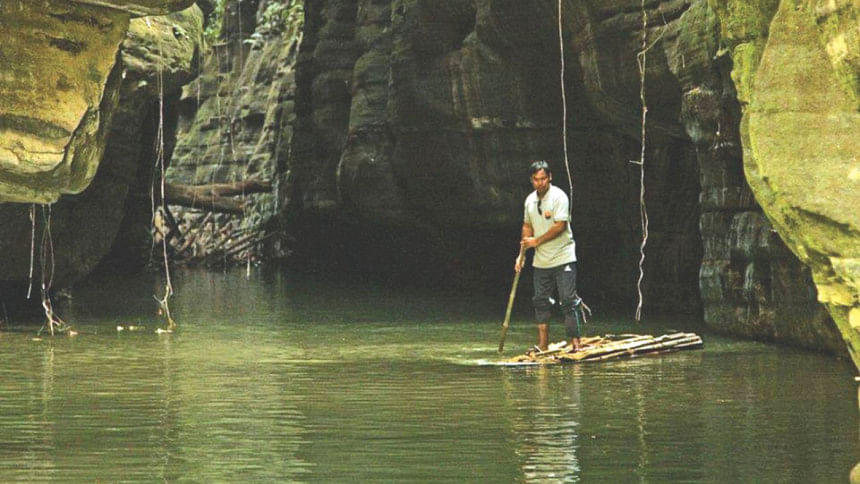Nature Quest: Mysterious, majestic caves

Cave is an underground hollow space, primitive homes of Stone Age hominid, sacred cultural and religious heritage. Popular Bangla names of cave are "guha" and "surang" and it is one of the rare ecosystems in the hill ranges of greater Sylhet, Chittagong, Chittagong Hill Tracts and Cox's Bazaar.
I came across a good number of caves during my nature and wildlife watch in the hill areas. The first and foremost among them is the Kudum of Harikhola semi-evergreen forest in Teknaf followed by Rongikhali at Nihla, Ali Surang at Alikadam, Badur Surang at Boga, Ruangchari Surang, Thindu Surang at Thanchi, Debotter Surang at Bangchari and more than dozens in the CHT area.
While entering those caves for searching wildlife, we followed the cave walk rules and took adequate care to minimise disturbance. Unfortunately, it has been noticed that tourists not only annoy the wildlife but also damage the caves by collecting orchids, stones, pebbles and hunting or trapping wildlife (turtles, crabs, prawns) during their cave tour. The Alutilla cave in Khagrachhari has become one of the most vulnerable places, as the natural features there are being destroyed and the wildlife within are killed.
People usually enter the cave with Moshal (torch) which is detrimental to the cave-dwelling animals, as they are mainly nocturnal and cannot withstand light with unusual flame and glow. Loud noise and waste disposal also pose a threat to the delicate and fragile ecotone of a cave.
During the cave exploration and filming expeditions, we have reported a wide variety of life forms in the caves. The common species observed include spiders, harvestmen, pseudoscorpion, millipedes, crickets, cockroaches, beetles, flies, woodlice, crabs, shrimps, crayfish, etc. Many of these animals are depigmented or totally white with reduced eyes. Birds like swiftlets, shrews, bats and oilbirds that roost and nest inside the caves use "echolocation" technique to navigate inside the dark caves. In the subterranean waters of some of the caves, cavefish are found. In addition, caves are also a treasure trove of certain indigenous plants like fern, mosses, orchids and the pitcher plants.
Most cave animals are invertebrates, but there are also some troglophilic vertebrates. Amphibians (frogs, toads, and salamanders), Aves, mammals (rats and other rodents, insectivores, pigs, felines, etc) and bats can also be found there.
Most of the caves in CHT have impressive water pathways, stream passages, trunk passages and key-hole passages. The caves range in size from small hillside openings to vast interconnected subterranean systems of many chambers and galleries.
Only five decades ago, the area was a deep forest and home to wildlife like tigers, elephants, deer, leopards, langurs and bear. Some areas were impenetrable. Only a few indigenous people lived there.
Commercial tree plantation, illegal logging, and dam megaprojects are to blame for the destruction of the precious ecosystem of the forest. Rubber, teak, eucalyptus and tobacco cultivation for export has also negatively affected the ecosystem.
Many sacred places in nature are associated with caves. Hill-dwelling people revere the caves. To protect this unique ecosystem, it is necessary to take strict measures.

 For all latest news, follow The Daily Star's Google News channel.
For all latest news, follow The Daily Star's Google News channel. 



Comments